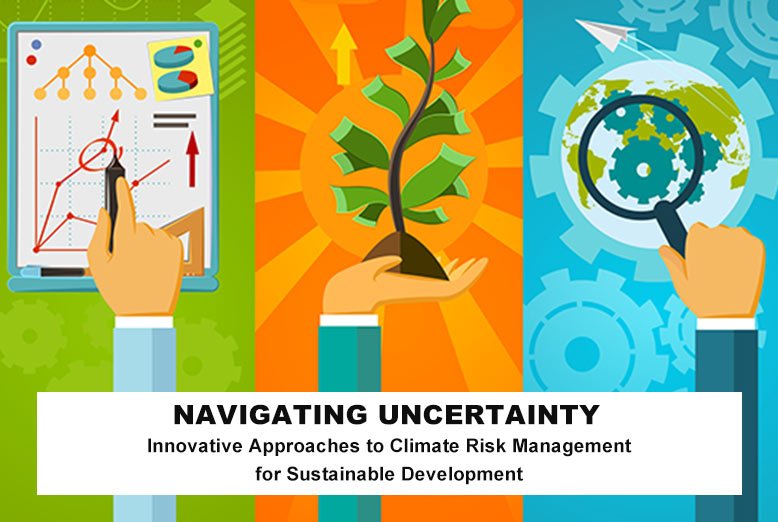Understanding Climate Risks
Climate change poses significant challenges to sustainable development, introducing uncertainties that affect various sectors, including agriculture, water resources, and urban planning. As extreme weather events become more frequent and unpredictable, communities around the world face rising sea levels, droughts, floods, and shifting agricultural zones. Effective climate risk management becomes essential for building resilience and ensuring that development initiatives are sustainable in the long run. This article explores innovative approaches to managing climate risks, allowing communities to adapt to changing conditions and pursue sustainable development goals.
Integrating Traditional Knowledge and Modern Science
One of the most promising approaches to climate risk management lies in the integration of traditional knowledge and modern scientific methods. Indigenous communities have long understood the nuances of their local environments, developing techniques for agriculture, water management, and disaster preparedness that have stood the test of time. By combining indigenous wisdom with contemporary scientific research, stakeholders can create more effective climate risk management strategies. For example, agroecological practices rooted in traditional knowledge can enhance ecosystem resilience while supporting food security in the face of climate change.
Participatory Approaches to Decision-Making
Engaging communities in the decision-making process is crucial for effective climate risk management. Participatory approaches encourage local involvement in identifying vulnerabilities and developing solutions tailored to specific contexts. Community-based assessments can provide valuable insights into local climate risks, such as flooding or water scarcity, enabling the design of targeted interventions. By fostering collaboration among governments, NGOs, and local communities, participatory approaches help ensure that climate risk management strategies are inclusive, equitable, and culturally relevant.
Leveraging Technology for Real-Time Data
Advancements in technology have transformed the landscape of climate risk management. The use of real-time data collection and analysis can significantly enhance our understanding of climate risks and improve response strategies. Satellite imagery, remote sensing, and geographic information systems (GIS) offer vital information on changing weather patterns, land use, and environmental conditions. These tools enable policymakers and communities to make informed decisions based on accurate, up-to-date information. Furthermore, mobile applications can facilitate early warning systems for natural disasters, helping communities prepare for and respond to climate-related events more effectively.
Financial Instruments for Resilience
Innovative financial instruments are essential in supporting climate risk management efforts. For instance, climate insurance can provide a safety net for vulnerable communities, helping them recover from climate-related shocks. Parametric insurance, which pays out based on predetermined weather conditions, offers a quick response to disasters. Additionally, green bonds and climate-focused investment funds can channel resources toward sustainable development initiatives that enhance resilience to climate risks. By diversifying funding sources and encouraging investment in climate adaptation projects, communities can build their resilience more effectively.
Building Climate-Resilient Infrastructure
Investing in climate-resilient infrastructure is a critical component of effective climate risk management. Traditional infrastructure often fails to account for the changing climate, leading to significant damage during extreme weather events. Innovative designs that incorporate climate resilience—such as flood-resistant buildings, permeable pavement, and green roofs—can minimize damage and reduce vulnerability to climate risks. Furthermore, designing infrastructure with flexibility allows for adaptability to future climate scenarios, ensuring longevity and sustainability.
Fostering Collaborative Networks
Effective climate risk management requires collaboration across various sectors and levels of government. Fostering networks that include researchers, policymakers, businesses, and civil society organizations can facilitate knowledge sharing and resource mobilization. Collaborative networks can also drive innovation by encouraging the exchange of ideas and best practices. For instance, multi-stakeholder partnerships in urban areas can develop integrated climate action plans that address local vulnerabilities while promoting sustainable development objectives. By working together, diverse stakeholders can create comprehensive strategies that address the multifaceted challenges posed by climate change.
Emphasizing Education and Capacity Building
Education and capacity building are essential for empowering communities to engage in climate risk management actively. By equipping individuals and organizations with the knowledge and skills to understand climate risks and potential solutions, we can foster a culture of resilience. Educational programs that focus on climate science, sustainable practices, and risk management can prepare communities for the challenges ahead. Additionally, training local leaders and decision-makers in climate adaptation strategies can ensure that interventions are context-specific and sustainable.
Adopting a Systems Approach
Navigating the uncertainties of climate change requires a holistic, systems-based approach. Climate risks are interconnected, affecting various sectors and communities in complex ways. By recognizing these interdependencies, stakeholders can develop comprehensive strategies that address multiple vulnerabilities simultaneously. For example, strategies to enhance water security can also support agricultural resilience and improve public health outcomes. A systems approach encourages stakeholders to look beyond isolated solutions and consider the broader implications of climate risk management efforts.
Engaging Youth in Climate Action
The engagement of youth is vital for fostering a sustainable future in the face of climate uncertainty. Young people are often the most affected by climate change, yet they are also powerful agents of change. By involving youth in climate action initiatives, we can harness their creativity and innovative thinking to develop effective solutions. Educational programs that empower youth to lead community-based climate projects can inspire a new generation of leaders dedicated to sustainable development and climate resilience.
Sustainable Future
As the impacts of climate change intensify, innovative approaches to climate risk management will be critical for navigating uncertainty and achieving sustainable development goals. By integrating traditional knowledge, leveraging technology, fostering collaboration, and emphasizing education, communities can enhance their resilience to climate risks. Ultimately, a proactive and inclusive approach to climate risk management can pave the way for a more sustainable and secure future for all.
Also Read: Leveraging NIST Certification for Enhanced Online Educational Security







